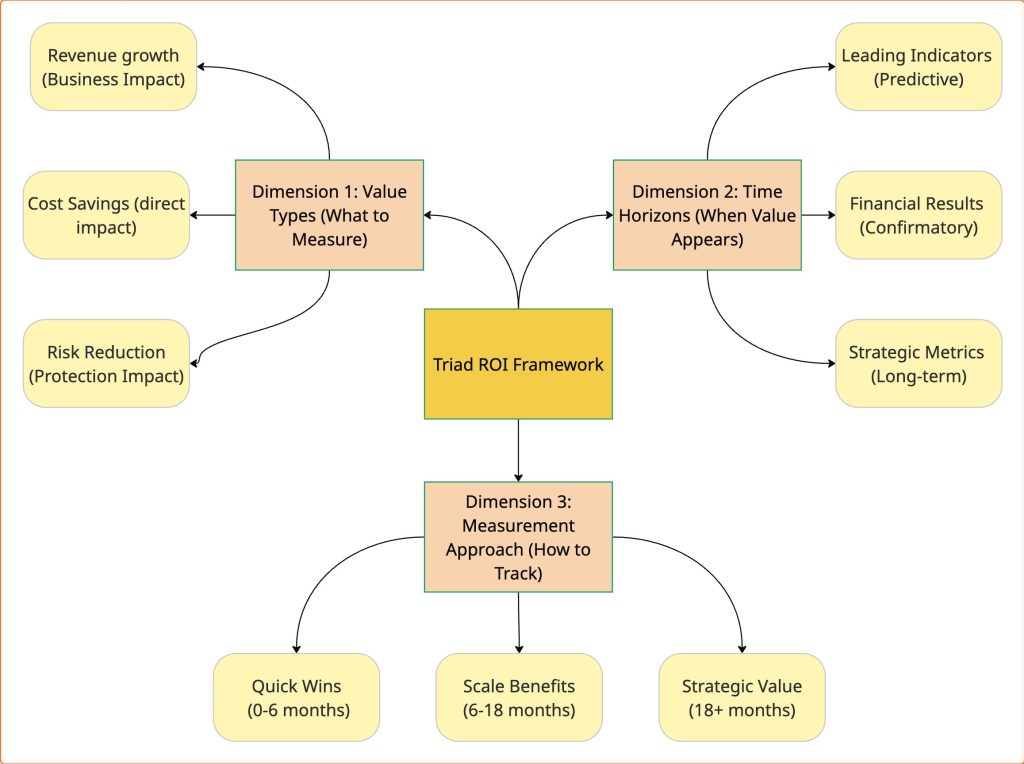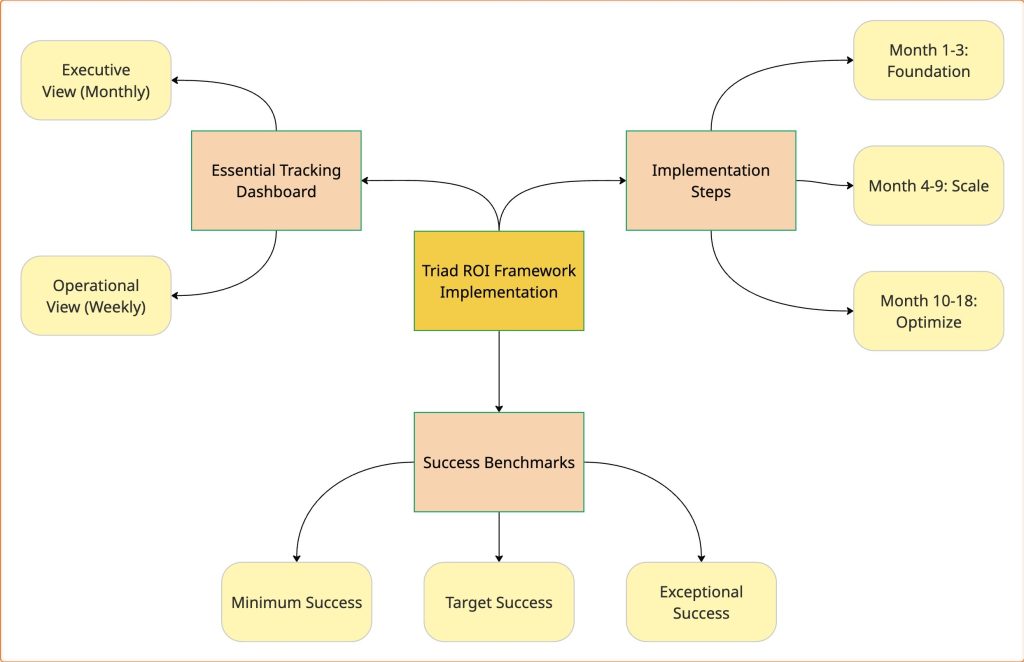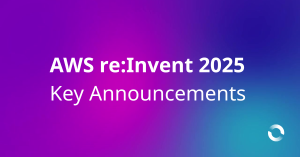Introduction
In this series, I outline the critical steps for achieving success with Agentic AI. My previous article explored the importance of rigorous evaluation and presented a four-step evaluation methodology. This article explores the next step, ROI to achieve Agentic AI results. You’ll learn a simple, practical framework for evaluating whether your Agentic AI initiatives are delivering real business impact.
Table of Contents
Data and Trends in Agentic AI ROI
Agentic AI has emerged as the breakthrough technology finally unlocking enterprise AI’s elusive ROI, with McKinsey estimating it will add $2.6–4.4 trillion in value beyond traditional AI capabilities.
While nearly 80% of companies still report no material earnings impact from most AI projects, top performers are seeing extraordinary returns: IBM’s Forrester study reveals 337% Agentic AI ROI over three years and $24 million in benefits , BCG finds “future-built” companies achieve 5x the revenue increases and 3x the cost reductions of competitors , and Accenture’s implementations deliver 25–35% reductions in manual work and 30–40% productivity gains .
Adoption momentum is unprecedented: PwC reports 88% of executives plan to increase AI budgets for agentic AI, 79% are deploying agents, and 66% have seen measurable productivity improvements .
However, results hinge on strategic execution, as the gap between leaders and laggards widens rapidly. Gartner forecasts a third of enterprise software will embed agentic AI by 2028, but warns over 40% of agentic AI projects will be cancelled by 2027 due to cost overruns and unclear value. Meanwhile, BCG finds that just 4% of companies presently reap full AI value, despite widespread investment.
The race is intensifying: Deloitte projects 25% of enterprises will launch agentic AI pilots in 2025, doubling by 2027. Early movers are already capturing the outsized returns that define leadership in the $2.6 trillion agentic AI revolution.).
The Triad ROI Tramework Overview
In this article, I propose a new framework, called the triad ROI framework that enterprises can use to decide whether the Agentic AI project is worth spending time on. The triad framework provides a streamlined approach to measuring agentic AI ROI through three core dimensions.
Dimension 1: Value Types (What to Measure)
Cost Savings (Direct Impact)
Key Metric: Labor hours saved × hourly cost – AI investment
Example: Automating 100 hours/week × $50/hour = $260K annual savings
Revenue Growth (Business Impact)
Key Metric: New revenue from AI capabilities + conversion improvements
Example: 24/7 service adds $500K revenue + 15% higher close rates
Risk Reduction (Protection Impact)
Key Metric: Prevented errors × cost per error + compliance savings
Example: 90% error reduction × $1K per error × 1000 transactions = $900K saved

Dimension 2: Time Horizons (When Value Appears)
Quick Wins (1-6 months)
Focus: Process automation and immediate productivity gains
Target: 30% of expected benefits, break-even on pilot projects
Scale Benefits (6-18 months)
Focus: Organisation-wide efficiency and cost optimisation
Target: 80% of expected benefits, positive ROI achieved
Strategic Value (18+ months)
Focus: Competitive advantage and new business capabilities
Target: 120%+ of projections through compound effects
Dimension 3: Measurement Approach (How to Track)
Leading Indicators (Predictive)
- Adoption Rate: % of target users actively using Agentic AI capabilities weekly. The definition of what counts as a minimum ‘AI use’ is company specific.
- Task Success Rate: % of AI tasks completed without human help
- User Satisfaction: Net Promoter Score from AI users
Financial Results (Confirmatory)
- Cost per Transaction: Total costs ÷ transactions processed
- Productivity Gain: Output increase per employee hour
- Revenue Attribution: Direct revenue tied to AI capabilities
Strategic Metrics (Long-term)
- Market Position: Competitive advantage duration in months
- Innovation Speed: Time to deploy new AI-enabled services
- Organisational Learning: Rate of AI capability expansion
Simple ROI Calculation
Total ROI = (Annual Savings + Annual New Revenue + Annual Risk Savings – Annual AI Costs) ÷ Annual AI Costs
Example:
- Annual Savings: $800K (labor automation)
- Annual New Revenue: $600K (new capabilities)
- Annual Risk Savings: $400K (error prevention)
- Annual AI Costs: $500K (platform + support)
ROI = ($800K + $600K + $400K – $500K) ÷ $500K = 260%
Applying the Triad ROI Framework
Here are a few mechanisms for implementing the triad ROI framework

Essential Tracking Dashboard
Executive View (Monthly)
- Total ROI: Current percentage return
- Payback Period: Months to break-even (target: <12 months)
- Value Realised: Actual vs. projected benefits
Operational View (Weekly)
- Automation Rate: % of target processes fully automated
- Quality Score: Accuracy of AI decisions vs. human baseline
- Adoption Progress: User engagement and utilisation trend
Success Benchmarks
Minimum Success
- 100% ROI within 12 months
- 25% productivity improvement in target areas
- 6-month payback on initial investment
Target Success
- 200% ROI within 18 months
- 50% productivity improvement with quality maintenance
- Measurable competitive advantage in market
Exceptional Success
- 300%+ ROI within 24 months
- Business model transformation enabled
- Market leadership position achieved
Common Pitfalls to Avoid
- Over-complexity: Keep metrics simple and actionable
- Under-measurement: Track enough to prove value but not everything
- Impatience: Allow 9-12 months for full ROI realisation
Summary and Next Steps
The simplified framework focuses on three value types, three time horizons, and three measurement approaches—creating a 3×3×3 model that captures 90% of agentic AI value with 50% of the measurement complexity.
Success Formula: Start with cost savings (easiest to measure), scale to revenue growth (highest impact), evolve to strategic advantage (longest duration). Track leading indicators to predict success, financial results to confirm it, and strategic metrics to sustain it.
The goal is not perfect measurement but actionable insight that drives better AI investment decisions and superior business outcomes.
To ensure your next step is informed and valuable, let us help you implement the ROI framework as part of our AI Studio offering.

Distinguished technology leader with 20+ years of experience in software architecture and engineering, specialising in data and AI.




